- News
- Reviews
- Bikes
- Components
- Bar tape & grips
- Bottom brackets
- Brake & gear cables
- Brake & STI levers
- Brake pads & spares
- Brakes
- Cassettes & freewheels
- Chains
- Chainsets & chainrings
- Derailleurs - front
- Derailleurs - rear
- Forks
- Gear levers & shifters
- Groupsets
- Handlebars & extensions
- Headsets
- Hubs
- Inner tubes
- Pedals
- Quick releases & skewers
- Saddles
- Seatposts
- Stems
- Wheels
- Tyres
- Tubeless valves
- Accessories
- Accessories - misc
- Computer mounts
- Bags
- Bar ends
- Bike bags & cases
- Bottle cages
- Bottles
- Cameras
- Car racks
- Child seats
- Computers
- Glasses
- GPS units
- Helmets
- Lights - front
- Lights - rear
- Lights - sets
- Locks
- Mirrors
- Mudguards
- Racks
- Pumps & CO2 inflators
- Puncture kits
- Reflectives
- Smart watches
- Stands and racks
- Trailers
- Clothing
- Health, fitness and nutrition
- Tools and workshop
- Miscellaneous
- Buyers Guides
- Features
- Forum
- Recommends
- Podcast
review
£2,100.00
VERDICT:
Fast, quick-accelerating and superbly stable in crosswinds, the Aero 58s set the new benchmark in carbon clincher performance.
Weight:
1,601g
Contact:
www.upgradebikes.co.uk
At road.cc every product is thoroughly tested for as long as it takes to get a proper insight into how well it works. Our reviewers are experienced cyclists that we trust to be objective. While we strive to ensure that opinions expressed are backed up by facts, reviews are by their nature an informed opinion, not a definitive verdict. We don't intentionally try to break anything (except locks) but we do try to look for weak points in any design. The overall score is not just an average of the other scores: it reflects both a product's function and value – with value determined by how a product compares with items of similar spec, quality, and price.
What the road.cc scores meanGood scores are more common than bad, because fortunately good products are more common than bad.
- Exceptional
- Excellent
- Very Good
- Good
- Quite good
- Average
- Not so good
- Poor
- Bad
- Appalling
Despite a couple of niggles, the Reynolds Aero 58s are excellent wheels: fast, stiff and stable in sidewinds.
New from Reynolds for 2013 is the Aero wheel range, featuring new rim shapes and other technology designed to cheat the wind and increase your speed. The range is clincher only, and comprises three rim depths: 72mm, 90mm and the 58mm model tested here, which is likely to appeal to the road racing crowd as well as triathletes and time triallists.
New technology
The biggest news is the development of a new rim cross section which Reynolds term Dispersive Effect Termination, or DET for short. Here's the man behind the idea, Paul Lew to give you a quick overview of the benefits:
In keeping with the trend for wider wheels pioneered by the likes of HED and Zipp, the Aero 58 (and indeed all models in the range) feature a brake track width of 26.2mm. To put this into perspective, the Zipp 404 Firecrests measure in at 24.7mm, though they do balloon out to 26.5mm below the brake track.
All aero benefits aside, this width could cause some issues with clearance, especially in older frames designed before the advent of wider wheels - I struggled to get them to clear my brake pads on my time trial bike for example. Try before you buy is most definitely recommended.

The wide brake track is where the similarities to the Firecrest and other wide rim shapes end however, as the Aeros taper down to a sharp point at the trailing edge, contrasting with the blunt trailing edge employed by nearly all the competitors.
Despite the increase in overall rim width, the width between bead hooks is still pretty conventional at around 15mm. As a result, 23mm tires are the maximum recommended for aerodynamics as a wider tyre will tend to balloon outwards, adversely affecting the transition between tyre and rim.
Stepping up
The reason for the narrow internal width is that the rim steps outwards from the leading edge to the brake track, creating a little ledge which runs around the whole wheel. The purpose of this is to create a zone of low pressure to help re-attach the air to the rim surface, after it has been disturbed by the tyre. This feature is unique to the 58mm and 72mm versions, as the 90mm version actually features a step on the inside surface - the idea being that air behaves differently as it passes over rims of different depths, so each rim shape must be unique.
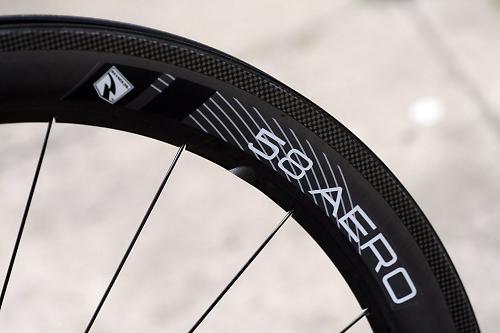
For those geeks out there (myself included) Reynolds have published a white paper going through the design process and testing of the DET technology. This is available on the Reynolds website [currently down or we’d link to it - Ed]. In summary, there's been a lot of thought and effort gone into the aerodynamics of these wheels - even the valve hole is aero optimised.
As well as aero performance, the other key consideration with full carbon clinchers is their braking performance. The Aero range employes Reynolds' CTg (Cryogenic Glass Transition) brake track which is a specific carbon laminate claimed to improve heat dissipation, thereby providing a more consistent braking performance even under extreme use. The wheels come with Reynolds' Cryo Blue brake pads, designed specifically for the CTg surface. Use of any other brake pads will invalidate your warranty.
One the road: speed increase & cross-wind stability
Out on the roads, the Aero 58s are discernibly fast and easily give you a 2km/h speed increase over a high profile wheel such as a Mavic Ksyrium (my normal training wheels). As a power meter user, I was consistently impressed with the average speeds I was able to achieve on rides where my power wasn't anything special. Comparing the Aero 58s to other wheels of similar depth (in terms of pure straight line speed) would require proper wind tunnel testing as the differences are too subtle to fully appreciate while out riding. Reynolds claim their wheels to be the fastest but then they would, wouldn't they?

What was most surprising was the 58s stability in crosswinds. Recent weather has been very windy and provided the perfect testing grounds for wheels claiming to be the best handling on the market. Consistent, high cross winds proved no problem whatsoever, it was only in really gusty conditions, such as when passing a gap in a hedgerow, that the 58s could be unsettled. Such was their predictability that I had no issue taking them out in 20+mph winds a mere 10 days after breaking my collarbone. I was able to test the wheels back to back with a set of Enve Smart 3.4s and felt that the Aero 58s were easier to handle despite being nearly 20mm deeper on the front wheel.
Stopping
Braking performance in the dry is very good, with a smoothly progressive feel and plenty of top end power. Coming directly off Mavic's market leading Exalith braking surface onto these 58s, the difference in power and modulation was only small.
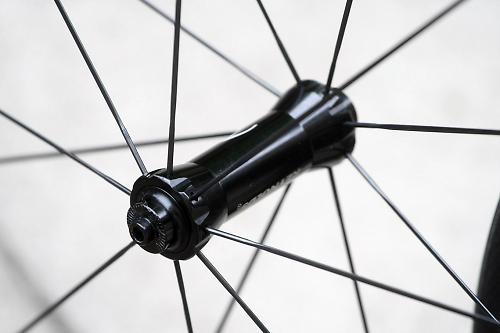
However, despite the revised Cryo blue pad design with large water shedding slots, the Aero 58s still exhibit the delay between applying the brakes and actually slowing down that affects most rim brakes. When the power does turn on, it is quite grabby so you really have to be paying attention. By no means are the 58s bad in the wet compared to other carbon wheels, but there's still some way to go before they are as predictable as alloy wheels.
At 1601 grams (measured, without skewers), the Aero 58s aren't going to set weightweenies' hearts a-flutter, but this is still pretty good for a clincher wheel of this depth. More importantly, the wheels ride a lot lighter than they are, being easy to get up to speed when sprinting out of corners.
Deep section carbon wheels often suffer from brake rub due to an imbalance between the rim stiffness and the spoke stiffness. The push towards improved aerodynamics has led to reduced spoke counts which simply can't handle to stiffness of the deep section, carbon rims. You often see the Tour sprinters using custom wheels with more spokes for this very reason. I couldn't tempt the Aero 58s into any sort of brake rub, which speaks to how balanced the wheels are. It's obvious that plenty of thought has gone into making this the ultimate road racing wheel.
Niggles
From a performance point of view, the Aero 58s are right up there with the best wheels in the market. However, when considering dropping over 2 grand on a set of hoops, you want every detail to be perfect. I had a couple of niggles with the Reynolds Aero 58s which put a small damper on an otherwise flawless performance.
Firstly, the wheels tend fill up with water when riding in the wet. The internal nipple design - another bugbear of mine but not such an issue on clinchers - means that there are plenty of entry points for water around the locations at which the spokes enter the rim. You have to take the tyre off to drain the rim which is a pain.

A couple of handy little bungs are included with the wheels, which prevent the valve from rattling around and seal the valve hole from water, but these both fell off after a couple of rides. You'd have thought this would have been identified in the road testing stage but obviously the roads in Utah are a lot smoother than in the west country.
And finally, why do wheel companies insist on supplying wheels with crappy external cam skewers that die after a few rides in the wet? Yes, they are light, but skewers are one place I'd prioritise function and safety over shaving a couple of grams. My advice: stick a couple of Shimano skewers on them and be done with it.
Foibles aside, the Aero 58s have muscled their way to the top of the mid-depth carbon clincher pile.
Verdict
Fast, quick-accelerating and superbly stable in crosswinds, the Aero 58s set the new benchmark in carbon clincher performance.
road.cc test report
Make and model: Reynolds Aero 58 clincher wheelset
Size tested: n/a
Tell us what the product is for, and who it's aimed at. What do the manufacturers say about it? How does that compare to your own feelings about it?
Reynolds describe the Aero 58s as a "phenomenal all-around wheel for the road racer, serious, performance oriented cyclist or that triathlete wanting just a little more of a competitive edge"
Tell us some more about the technical aspects of the product?
Rim Depth: 58mm
Width: 26.2 mm
Design: Computational Fluid Dynamics / A2 Wind Tunnel Verified
Spokes: 16/20
Spokes Front: Aero Spokes
Spokes Rear: Aero Spokes
Weight: 1601g measured without skewers
Hubs: Custom DT Swiss straight-pull
Compatibility: Shimano / SRAM / Campagnolo
Braking: CTg Braking System
Brake Pads: Reynolds Cryo-Blue
Aero Feature: DET™ Dispersive Effect Termination
Rate the product for quality of construction:
9/10
The rims themselves were defect free. The DT Swiss hubs are a safe and reliable choice for such a wheel
Rate the product for performance:
10/10
Quite simply the best carbon clinched on the market at the moment
Rate the product for durability:
8/10
The test period was only a month long so long-term durability wasn't tested. That said, the DT Swiss hubs are renowned for their durability so I don't foresee any problems coming from those
Rate the product for weight, if applicable:
8/10
In line with other leading wheels of similar depth
Rate the product for comfort, if applicable:
9/10
The Aero 58s could never described as comfortable, but they do deliver a very smooth and damped ride which is quite addictive
Rate the product for value:
8/10
At £2300, the Aero 58s are a similar price to other models from leading manufacturers.
Tell us how the product performed overall when used for its designed purpose
The wheels are super fast in a straight line but can also handle cross winds. For flatter road races or hilly time trials, they are just about perfect
Tell us what you particularly liked about the product
The cross wind performance
Tell us what you particularly disliked about the product
Wheels filling up with water when ridden in the rain
Did you enjoy using the product? Yes
Would you consider buying the product? I wish
Would you recommend the product to a friend? Yes
About the tester
Age: 21 Height: 190cm Weight: 69kg
I usually ride: Canondale EVO Red My best bike is:
I've been riding for: 5-10 years I ride: Every day I would class myself as: Semi pro
I regularly do the following types of riding: road racing, time trialling, cyclo cross, commuting, mtb,
For 5 years, racing was my life and I went all the way from a newbie bonking after 40 miles, to a full-timer plying my trade on the Belgian kermesse scene. Unfortunately, the pro dream wasn't meant to be and these days, you're more likely to find me bimbling about country lanes and sleeping in a bush on the side of the road.
Latest Comments
- quiff 27 min ago
Less academic, but memorably encapsulated recently by Saoirse Ronan
- quiff 38 min 26 sec ago
Fascinating - I have always thought Hersheys has a whiff of vomit about it!
- Global Nomad 39 min 25 sec ago
good to see you're testing the farsports wheels - hope to see road.cc continue to expand the range of brands it considers. These or the shallower...
- chrisonabike 41 min 57 sec ago
Duly triggered! (At least "it's comedy!" though)....
- quiff 43 min 23 sec ago
Agreed, though those in thrall to the car lease would probably think the same of my coffee expenditure...
- chrisonabike 45 min 5 sec ago
Frustratingly we could probably avoid (most of) this if only one or two fundamental things were the other way around e.g. "you can only drive on...
- chrisotherwise 1 hour 12 min ago
Sadly very normal. And the sand contains loads of evil little shards of flint.
- David9694 4 hours 21 min ago
Random driver account: "cyclists should be made to wear hi viz like workers do on a building site"....
- quiff 4 hours 34 min ago
"The algorithm" served me an older JV video last week which I now can't get out of my head....







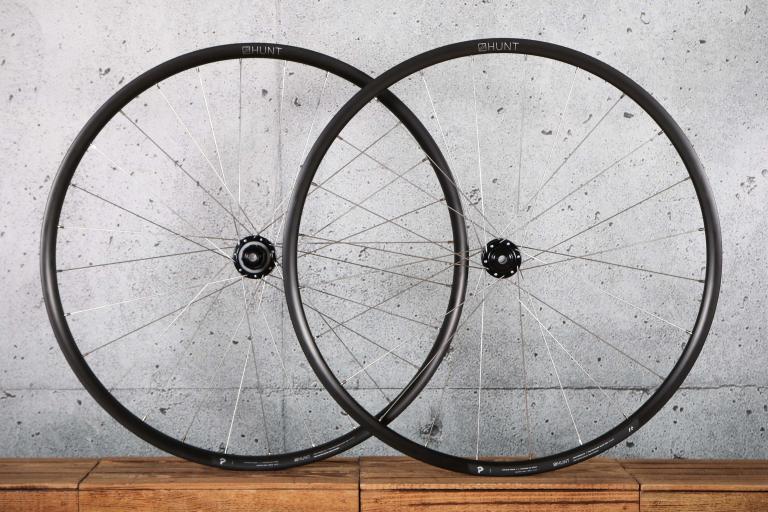

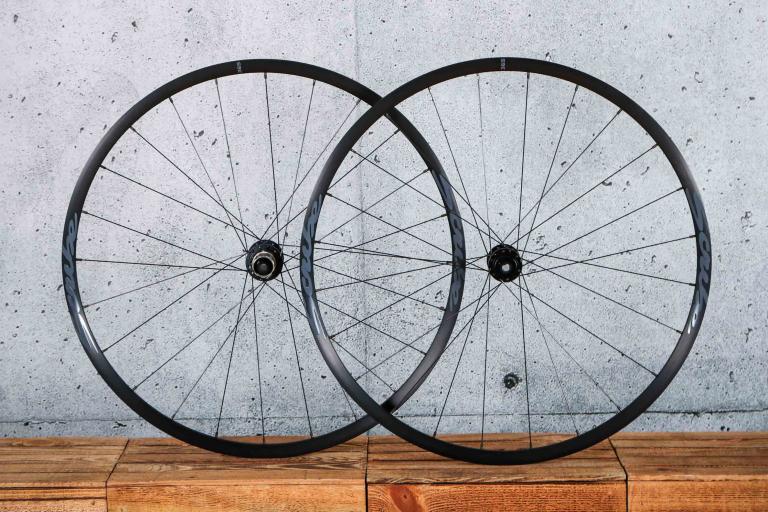
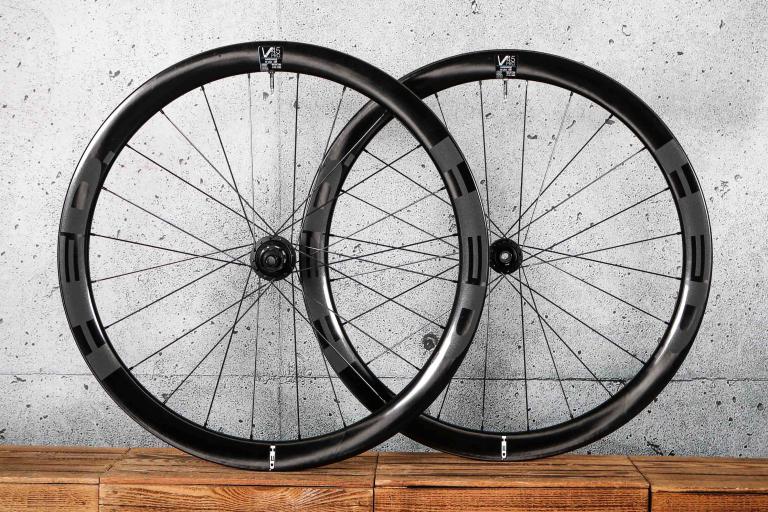
Add new comment
15 comments
Rookybiker: I refer to "spoke stiffness" as opposed to "spoke count" as the gauge of the spokes used also affects the stiffness of the wheel. In the case of wheels with carbon spokes, it is possible to achieve high stiffness with very few spokes indeed.
Is it just me or does anyone else hate 8:30 'Americans slowly explaining things' videos? Just show us a diagram, give some shots of the wheel being tested, show a graph of how it performs compared to some others, done! 1:30 is enough if done properly.
£2,100? Over 1,600g? Fill up with water (when they weigh even more)? Crappy skewers? FAIL
As for "all carbon wheels" being "interesting" in the wet, my Enve 25s are almost as good as my Open Pro CDs - and they are amazing...
BTW, my Mavic/American Classic clinchers weigh only 50g more than those Reynolds, and I know what I'd rather take on a tour of the Flemish cobblestones.
Well if Enve have genuinely solved the 'braking in the wet' problems with carbon, then that's a real breakthrough.
I googled the Enve 25's, and they look amazing, sure, but you're not actually comparing like with like. The Reynolds 32 tubular would be most closest competitor, 1600g is light for a clincher at 58 mm depth. Your Enves are a climbing wheel, these Reynolds are suited more to TTs or flat racing. Don't think they'd be the first choice for cobbles either.
personally speaking if I'd have saved up for a wheelset like this I wouldn't want to be limited to only using these on the most perfect sunny day, it would be a waste of money in our climate. Good to hear from the reviewer the small ingress of water is really only very minor, and not an issue in itself to detract from the quality of these wheels.
I have tried these wheels on a demo ride (201k Wiggle Magnificat) and while I don't have any experience with deeper section wheels (I ride Mavic Ksyrium SR all year) these wheels were absolutely fantastic on quite a lumpy course - they spin up very quickly, you don't notice the slight weight penalty when climbing and when on a rolling or flat section they just keep up your speed very easily. Honestly, if I had the money now they would be on my bike. It was a rather dry day - average was 27C - so I can't comment on rainy condtions.
- so I can't comment on rainy condtions.
These got a great review but everyone picks up on the only negative they could find, as if to justify why they'd never have them!
I certainly wouldn't take these out in the rain, my experience with Reynolds in the wet has been interesting, to say the least! But this applies to all carbon wheels, I believe
Interesting to are how they compare to the Mavic's just in to Road CC this week, similar price and weight. I reckon rather well..
"Deep section carbon wheels often suffer from brake rub due to an imbalance between the rim stiffness and the spoke stiffness". What is this supposed to mean, that there wouldn't be brake rub if only the rim was as flexible as the spoking? Of course not! So why not say: ""Deep section carbon wheels often suffer from brake rub due to low spoke count"?
i might buy a pair of these, and not ride in the rain lol
When I say that the wheels "fill up" with water, I'm talking about a small amount of water ingress, not litres. In use, you don't notice it but you can hear a bit of splashing if you shake the wheels.
The review does emphasize the small issues I had with the wheelset, but this is only because I have tried hard to find any problems.
Overall, the performance of the wheels is what shines through when you use them. These are the best wheels I have had the pleasure of riding and the score reflects that.
Hard to imagine a wheelset at this level would fill up with water in the rain - was this a one off (faulty set?) or have other users experienced this as well? Any feedback from Reynolds regarding the niggles you have pointed out? I guess most people may elect not to take these out if there's a cloud in the sky.
I was sure that was the case too, but Internet pedantry is something of a hobby and I couldn't let the chance slip by.
Internal cam skewers are usually the good sort, the original Campagnolo design was internal. It's the weight weenie external cam ones that are the pony ones.
For top carbon clinchers they don't really sound all that good to be honest...
Yeah, agreed with ilderracer, these wheels sound like 'avoid', given the price. The high rating doesn't square with the fairly serious "niggles" (I have much, much cheaper carbon clinchers that don't have these problems).
Fill up with water???! lol thats put me off straight away